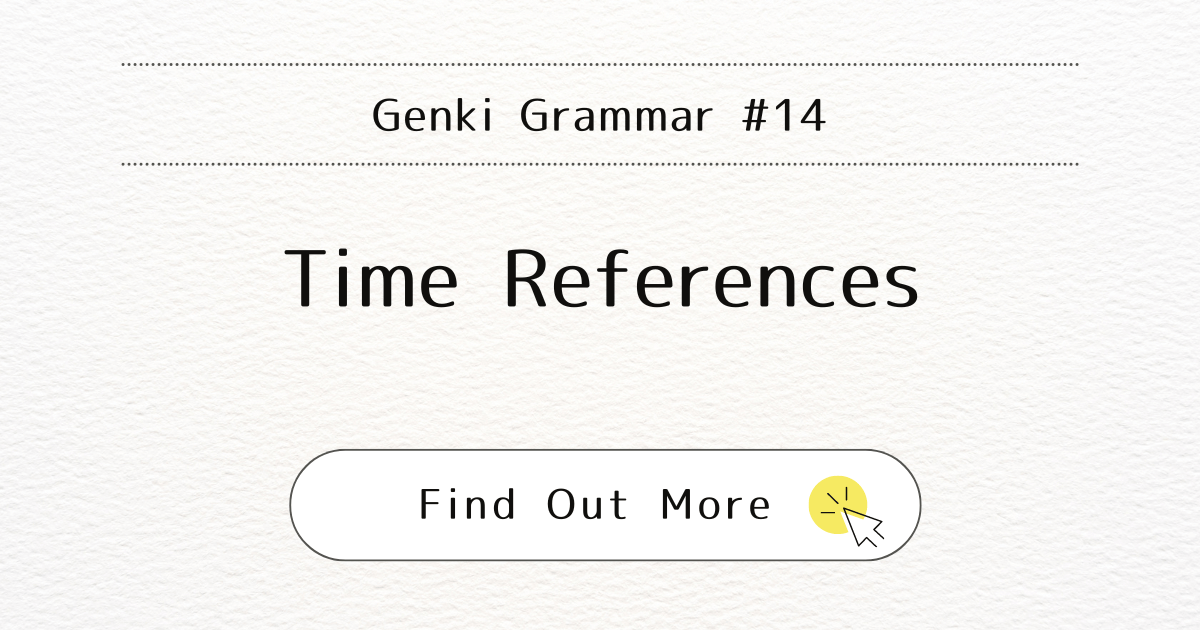
Introduction
Understanding time references is essential in mastering Japanese. The particle に (ni) is crucial for expressing specific times and dates. In this post, we’ll learn how to use に with various time expressions to make your Japanese more accurate and natural.
What It Means
The particle に (ni) is used to indicate specific points in time. It’s similar to saying “on,” “at,” or “in” in English.
When You Use It
Use に (ni) with:
Days of the week: “on Sunday”
Numerical time expressions: “at 10:45,” “in September”
Examples:
日曜日に行きます。 (Nichiyoubi ni ikimasu.) I will go on Sunday.
7時45分に起きます。 (Shichiji yonjuugofun ni okimasu.) I get up at 7:45.
8月に帰ります。 (Hachigatsu ni kaerimasu.) I will go back in September.
When You Don’t Use It
Do not use に (ni) with:
Time expressions related to the present moment: “today,” “tomorrow”
Expressions that describe repeated actions: “every day”
The word for “when”
Examples:
きょう行きます。 (Kyou ikimasu.) I will go today.
毎朝ニュースを見ます。 (Maiasa nyuusu o mimasu.) I watch the news every morning.
いつ来ますか。 (Itsu kimasu ka.) When will you come?
Optional Usage
You usually don’t use に (ni) with:
Parts of a day: “in the morning,” “at night”
The word for “weekend”
However, depending on style, emphasis, and personal preference, に (ni) can sometimes be used.
Examples:
朝(に)新聞を読みます。 (Asa (ni) shinbun o yomimasu.) I read a newspaper in the morning.
週末(に)何をしますか。 (Shuumatsu (ni) nani o shimasu ka.) What will you do on weekends?
Conclusion
Mastering the use of に (ni) with time references will help you express when events happen more clearly.



